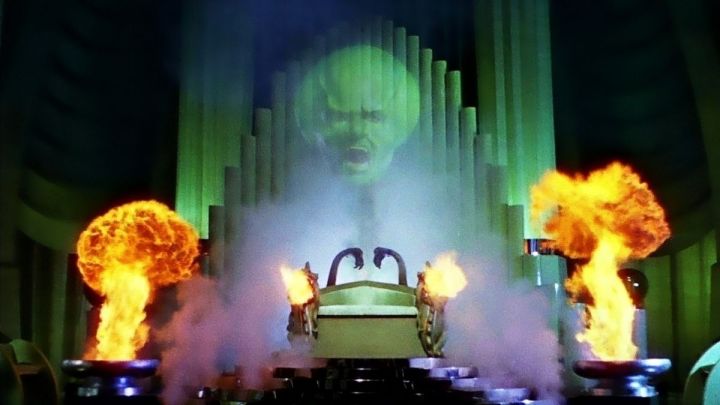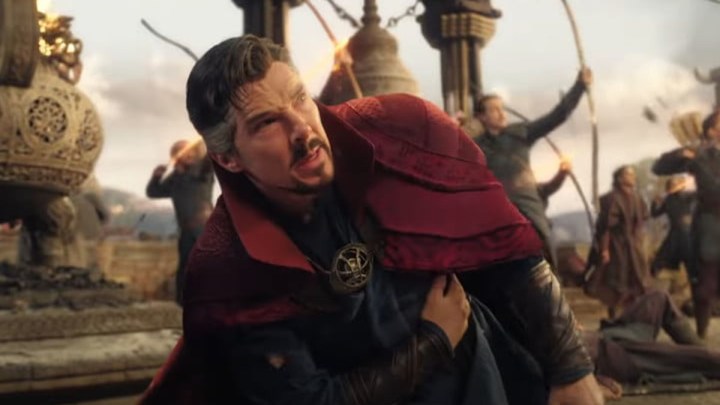Why are we so fascinated by the sorcerer? Over the years, the role has evolved past its initial duty, going from a wise and elderly supporting character to a leading man and, in some cases, a sex symbol for the geeky set. The archetype represents power, freedom, and knowledge, as well as transcendence from the physical and mortal world into a higher plain and state of being. Magic in all its forms is a prize, a gift that so few people get and almost everyone would die to have.
The sorcerer archetype is one of the most dynamic, a near ever-changing figure of mythical proportions and a staple of fantasy stories. Going back as far as the Middle Ages, the sorcerer has enthralled thanks to the supernatural abilities that separated him from earthly characters. In chivalric romances, the sorcerer was always old and brilliant, the ultimate mentor to guide and nurture the young and inexperienced knight in his quest for immortality — Merlin, arguably the prototype for all sorcerers to come, embodied the archetype perfectly.
The sorcerer was stoic and incorruptible, detached from all earthly pleasures, in stark contrast to his female counterpart, the tempting and provocative sorceress. Succumbing to his desires usually represented the sorcerer’s doom; for example, most versions of the Arthurian legend have Merlin dying, becoming imprisoned, or simply vanishing after falling madly in love with the Lady of the Lake, his former student. Without him, Arthur and Camelot weaken, eventually leading to their downfall. Indeed, Merlin was the power behind the throne and the main reason for Arthur’s dominance.
The fantasy genre immortalized the sorcerer as an almighty, all-powerful, all-seeing, and all-knowing figure above everyone else. Without him, the story broke apart; in fact, it didn’t even exist.
The archetype in literature

Fantasy authors followed the Merlin archetype with almost unyielding devotion, with characters like Gandalf and Saruman from The Lord of the Rings and Dumbledore from Harry Potter serving as thinly veiled stand-ins. However, as sensibilities changed, so did the sorcerer. Taken away from his near-perfect status, the sorcerer became a shifting figure in fantasy. Authors often depicted him as either a clumsy and bumbling buffoon prone to accidental brilliance or a manipulative and cunning figure with questionable morals. Merlin himself has been all these things, depending on his role in the story.
Still, for all his power and knowledge, the sorcerer remained a supporting figure away from the spotlight. This decision was probably deliberate, considering how absurdly overpowered he was. His immense abilities and wisdom easily resolved most problems in any given plot, and what’s rewarding about a story where a protagonist goes through nothing to achieve everything? If the sorcerer wanted to become the leading man in his story, he’d need to be considerably humbled down. However, it would take centuries before anyone attempted to bring him down to Earth, and it wouldn’t be in literature.
The sorcerer in movies

Since its inception, cinema has challenged audiences’ perceptions of well-known tropes and ideas. Still, the early examples of sorcery in the medium stick to the mysterious and all-powerful idea that first popularized the trope. However, Victor Fleming’s adaptation of the 1900 novel The Wonderful Wizard of Oz introduced a significant change to the sorcerer by turning him into a human posing as the almighty ruler of Oz. The shift came to represent a new side to the trope, confirming its elasticity and adaptability. Directors enjoyed exploring the charlatan side of a supposed sorcerer while still suggesting a genuine supernatural connection. Prime examples include Ingmar Bergman’s The Magician and Richard Attenborough’s Magic.
Films also showcased the silly sorcerer, particularly animated ones. Disney’s Fantasia and The Sword in the Stone portrayed powerful yet clumsy sorcerers who quickly endeared themselves to audiences. Murvyn Vye’s buffoonish Merlin in A Connecticut Yankee in King Arthur’s Court took an antagonistic role, although his absurdity remained his most distinguishable feature.
The inexperienced sorcerer also saw a rise in prominence, often appearing as a young man learning his craft. Not silly but inexperienced, the young sorcerer gained significant fame after Peter MacNicol’s portrayal of the wizard Galen in the 1981 fantasy film Dragonslayer. MacNicol’s Galen is also one of the earliest and most notorious examples of a sorcerer in a leading role. Animated movies like The Last Unicorn and the underrated The Black Cauldron also explored the idea of a sorcerer or magic-enhanced young man as the lead of the story,
The Boy Who Lived (and changed everything)

Harry Potter marked a shift in the cinematic portrayal of the sorcerer. Based on the novel of the same name, Harry Potter and the Sorcerer’s Stone introduced the Boy Who Lived, a reluctant hero whose magical powers separated him from other fantasy champions. Not a knight or a prince, Harry was the wizard without any wisdom, the magician without any power. He was far from the most impressive character in the series — that would be miss Hermione Granger, who lived up to the sorcerer’s all-powerful, all-knowing trope — yet Harry was the hero the fantasy realm needed to become relevant again.
Indeed, the genre had been in constant decline for a considerable time before the tandem of Harry Potter and The Lord of the Rings rescued it from oblivion. However, while Gandalf and Saruman embraced the sorcerer archetype, Harry subverted it, presenting audiences with an immature, struggling teenager who, above all things, longed for normalcy. Harry loved having powers, but hated using them to fight a war he never wanted to be a part of in the first place.
The Harry Potter saga spawned eight successful movies, each developing and cementing Harry as the ultimate cinematic sorcerer hero. Reluctance and immaturity were crucial to his characterization; Harry was volatile and impulsive, a Gryffindor if ever there was one. Yet, this unique personality made millions of fans fall under his spell. More than any superhero that would follow, Harry was the hero of a generation and the character who single-handedly changed the sorcerer for good.
Wizards as a leading men

Harry opened the door for the sorcerer to become a leading man in big Hollywood tentpoles. The first big-screen attempts to capitalize on the Potter legacy — The Sorcerer’s Apprentice, Eragon — failed to achieve the same success, but the sorcerer thrived on the small screen.
The BBC’s Merlin reimagined the trope’s originator as a young man coming to terms with his power. Mixing the almighty and clumsy portions of the sorcerer archetype, Merlin proved itself a worthy successor of the Potter legacy. Like Harry, Merlin was in the dark about his role in the story, understanding just enough to fulfill his duty. Merlin was charming, sweet, and staunchly loyal to Arthur; despite his fears, he was also courageous, daring, and willing to sacrifice himself for the Once and Future King. Unlike Harry, Merlin didn’t resent his duties and appreciated his larger role in Albion’s (Great Britain’s) destiny.
The sorcerer also became the ideal figure to explore deeper themes like love, greed, and the limits of the human mind. Christopher Nolan’s mystery thriller The Prestige used magic as the setup to investigate themes of obsession, hatred, and ambition. Similarly, Neil Burger’s The Illusionist — released a couple of months before Nolan’s Prestige — framed its love story around the titular character, whose magic powers remained ambiguous for the film’s duration. Four years later, Sylvain Chomet’s animated film, also called The Illusionist, explored contemplative themes of family, separation, and innocence’s departure.
Television also found a way to exploit the wizarding trope, with shows like Disney’s Wizards of Waverly Place and Starz’s short-lived Camelot as prime examples. The rise of the sorcerer as a protagonist continued even after the Potter franchise ended, although the attempts to keep the struggling Wizarding World afloat have been mixed to negative.
The superhero sorcerer

If Harry Potter made the sorcerer cool, then Doctor Strange made him hot. With the Marvel Cinematic Universe in rapid expansion and the Harry Potter franchise over, Doctor Strange became cinema’s leading wizard, a superhero hunk who made the sorcerer mainstream. Strange didn’t hide his magic, but actively used it and even flaunted it in his world-saving shenanigans.
Elevated by Benedict Cumberbatch’s confident and vanity-ridden portrayal, Strange rose to the apex of sorcerer content. No longer a wise old guy with a white beard or a skinny and inexperienced boy on the cusp of manhood, Cumberbatch’s Strange was a hero in every sense of the word. Furthermore, he lacked the archetype’s eccentricities, replacing them with a cleaner and fashionable look that rejected tradition and embraced modernity. Strange is hot, plain and simple, capable of standing with the likes of Chris Evans’ Captain America or Chris Hemsworth’s Thor and holding his own.
Strange’s powers are also among the most dynamic in the MCU. He lacks wands or incantations; all he needs are his flamboyant gestures to conjure the most spectacular attacks. Strange can battle dark forces from the mystical realm as easily as he can fight the Mad Titan Thanos, possessing a dynamism that few other Marvel heroes have. More than Harry, Strange is the true magic superstar, the yassification of the sorcerer. He is mysterious, egotistical, handsome, charming, and powerful. With Strange, the sorcerer finally became the superstar he was always meant to be.
The future
Strange returned for the highly anticipated Doctor Strange in the Multiverse of Madness, one of the few films in the post-pandemic era to be a genuine hit. (It’s currently the highest grossing movie of the year at over $800 million worldwide.) Doctor Strange will only become a more valuable player in the MCU, especially after the departure of key players like Cap and Iron Man. The DC universe also has several high-profile magic-centered projects on its slate, including the upcoming tandem of Black Adam and Shazam! and the Emerald Fennell-written Zatanna solo movie.
The recent release of Fantastic Beasts: The Secrets of Dumbledore probably doomed its franchise thanks to disappointing reviews and box-office returns; indeed, the Wizarding World has made multiple high-profile yet easily avoidable mistakes that have severely tarnished its value. Still, the Potterverse isn’t going anywhere, and when it returns to the big screen with a new start away from the Fantastic Beasts controversies, fans will surely embrace it with open arms.
And so, with major franchises like Marvel and DC betting on the sorcerer and the Wizarding World regrouping to come back stronger than ever, the sorcerer’s cinematic future seems promising. Audiences will always crave magic; that’s not likely to change, and the sorcerer can be anything he needs to fit the current time’s sensibilities. Forget the age of superheroes, the age of magic is only beginning.



